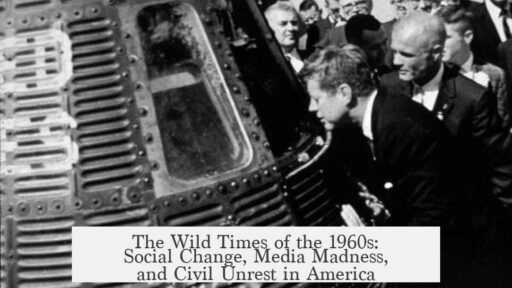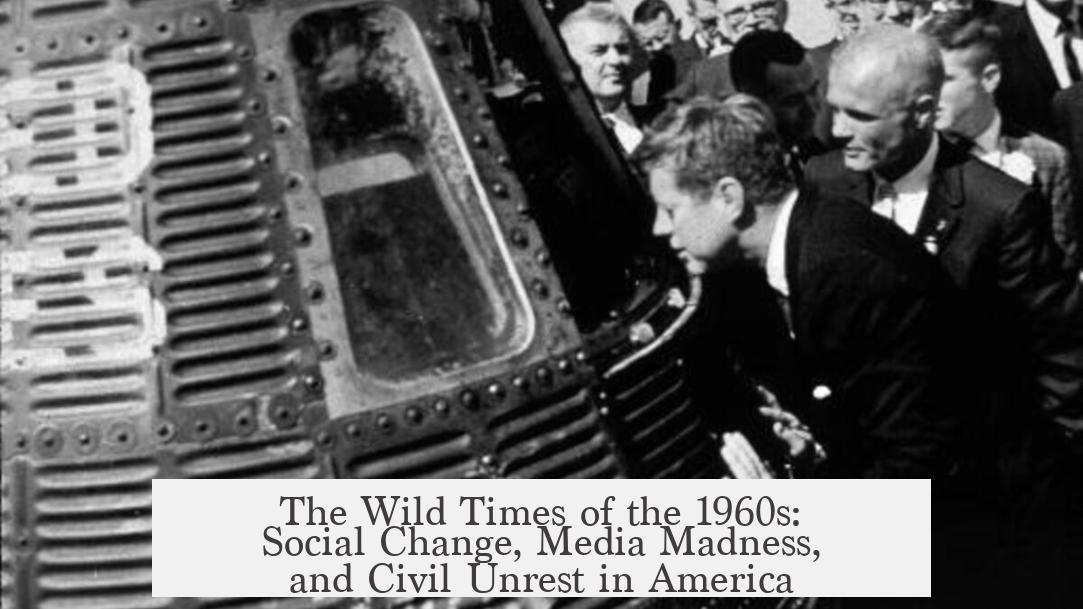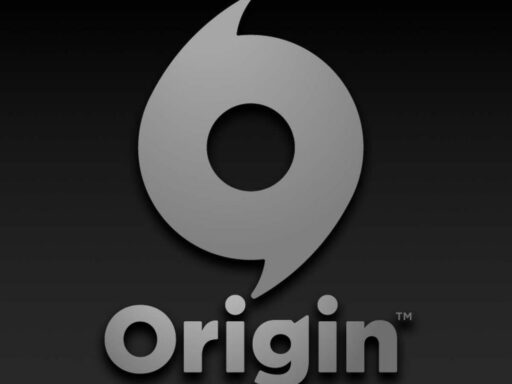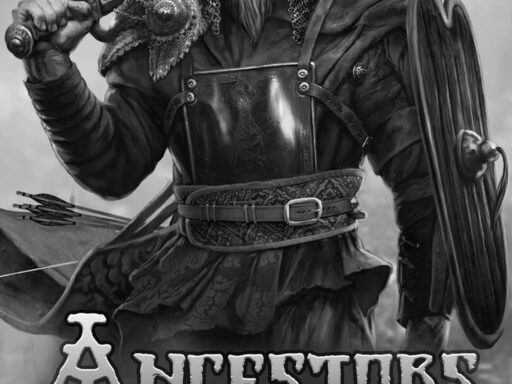The 1960s in America was an extremely turbulent and transformative decade marked by major social, political, and cultural upheavals. It was a time when longstanding norms were challenged and new values emerged amid intense conflict and rapid change.
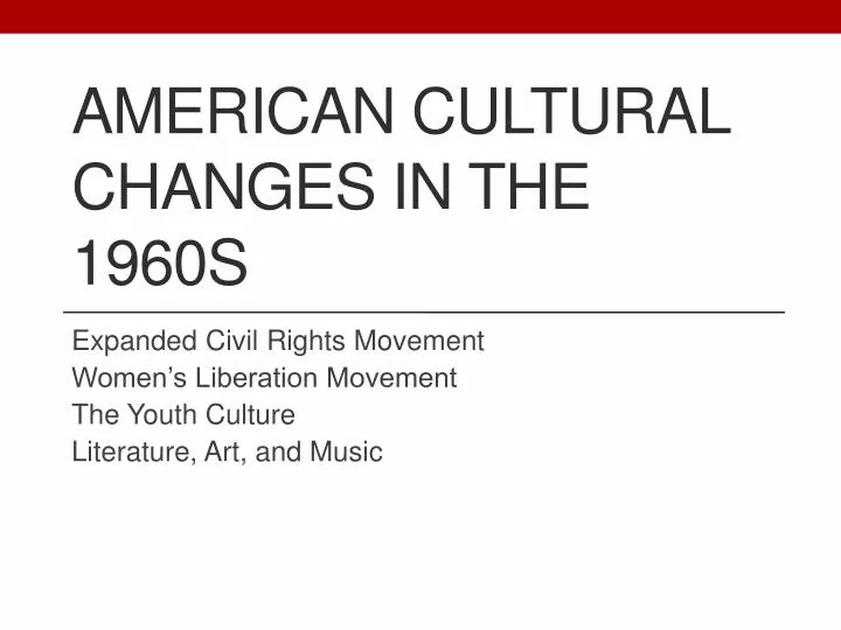
The decade witnessed key historical events such as the Vietnam War and Cold War tensions. It also saw landmark civil rights battles that pushed racial equality to the forefront. The assassinations of prominent figures including John F. Kennedy, Robert Kennedy, Martin Luther King Jr., and Malcolm X created a climate of fear and uncertainty. Social movements like feminism, abortion rights, and Black Power gained momentum, while groups such as the Black Panthers and Weather Underground adopted confrontational tactics. The Stonewall riots became a symbol for emerging LGBTQ rights activism.
The cultural landscape shifted dramatically. Traditional dress codes and hairstyles changed as younger generations embraced long hair, short skirts, and rock and roll music. White Americans increasingly engaged with black music and other ethnic cultures, expanding cultural tastes. Society moved away from post-war conformity toward a modern, individualistic consumer culture. This transformation would shape American identity well beyond the 60s.
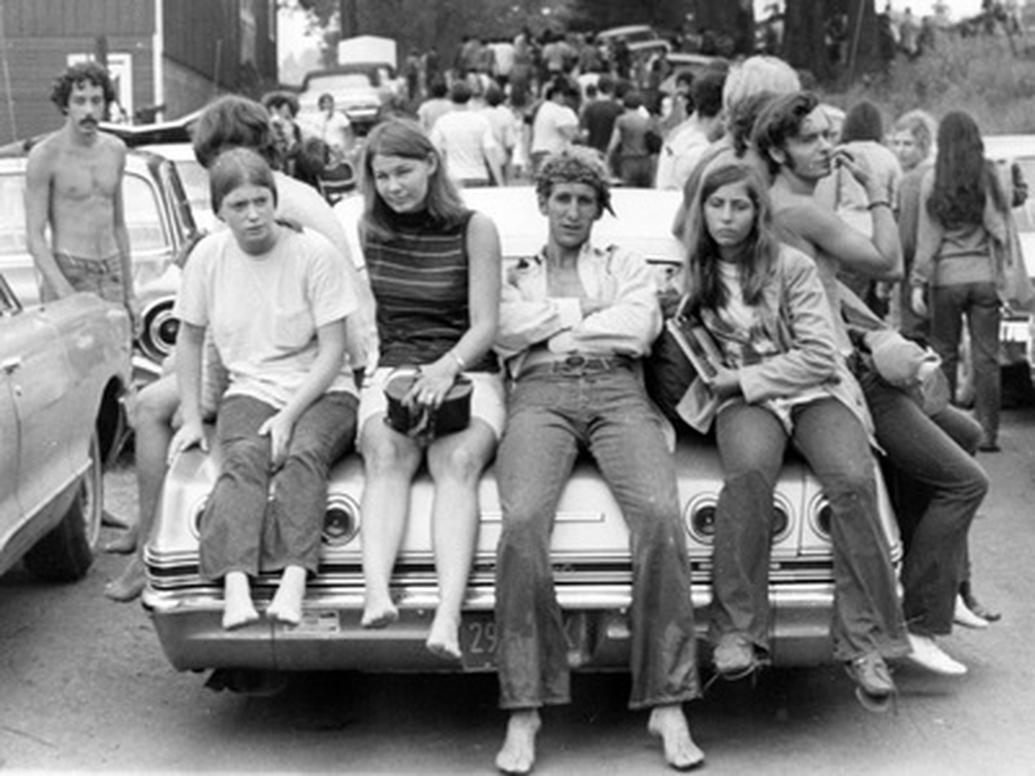
Mass media played a crucial role in shaping public perception of the decade’s events. Television became widespread, delivering up to four hours of news daily by 1970. For the first time, large audiences saw significant events live, including the assassinations of Lee Harvey Oswald and Robert Kennedy. This exposure intensified public engagement and speculation. The nightly news broadcast demonstrated protests and police violence on a new scale, amplifying social tensions countrywide.
The visceral experience of seeing police respond violently to protests in real time changed public awareness and attitudes. It was no longer undermined as mere rumors or distant stories as in prior decades. The media created a sense of immediacy and urgency that fueled further unrest and advocacy.
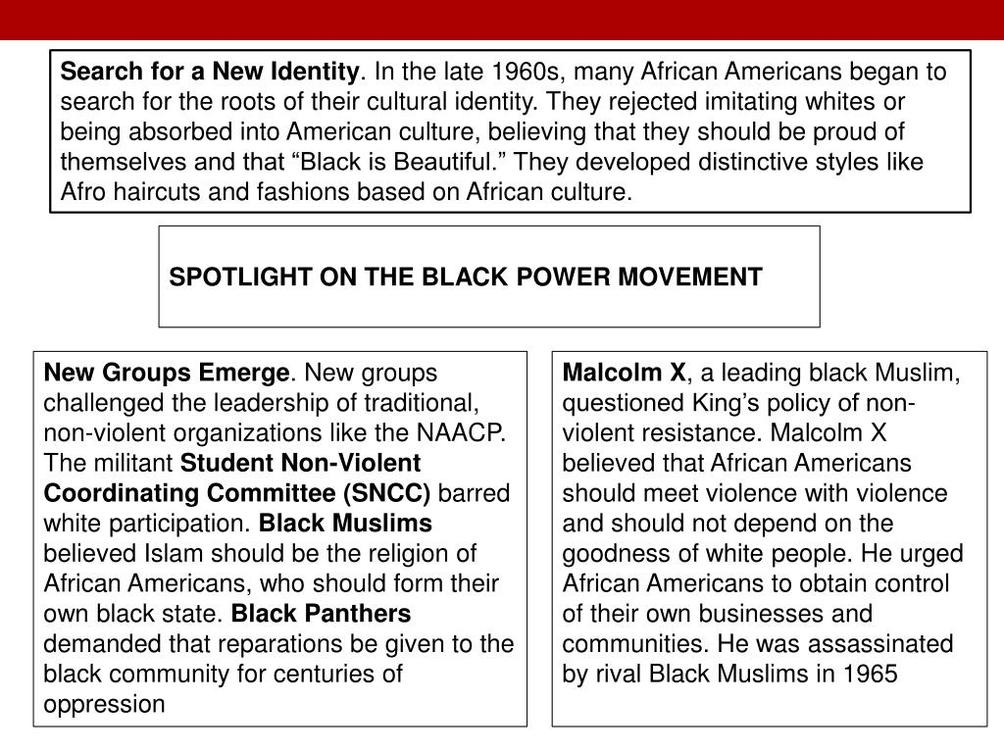
While some historians argue that other decades like the 40s, 50s, or 70s featured more monumental shifts, the 60s remain iconic for the stark contrast they posed to the 50s’ conformist, conservative culture. The decade embodied a break from decades of restraint and laid the groundwork for many social freedoms and cultural norms taken for granted today.
The strong emotional memory of the 60s is influenced by the Baby Boomer generation, who came of age during this period. Their firsthand experience of the era’s upheavals continues to shape American public memory.
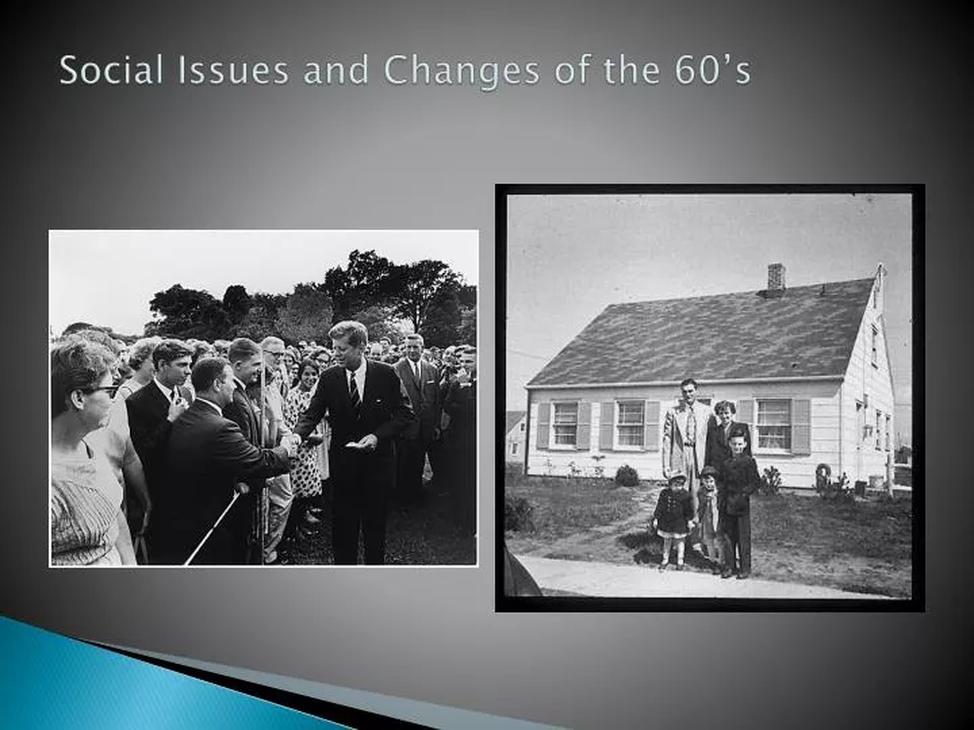
One of the most notable aspects of the 1960s was the scale of civil unrest and aggressive law enforcement responses. For example, in the violent Detroit rebellion of 1967, over 40 people were shot by police. Such clashes between authorities and protesters exemplify the decade’s intense conflicts.
Overall, the 1960s in America were complex and multifaceted. It was a decade of profound change fueled by war, social movements, assassinations, and cultural revolutions. Mass communication made these events immediate and vivid for millions. The era stands as a pivotal moment in American history when society’s directions were contested and new identities forged.
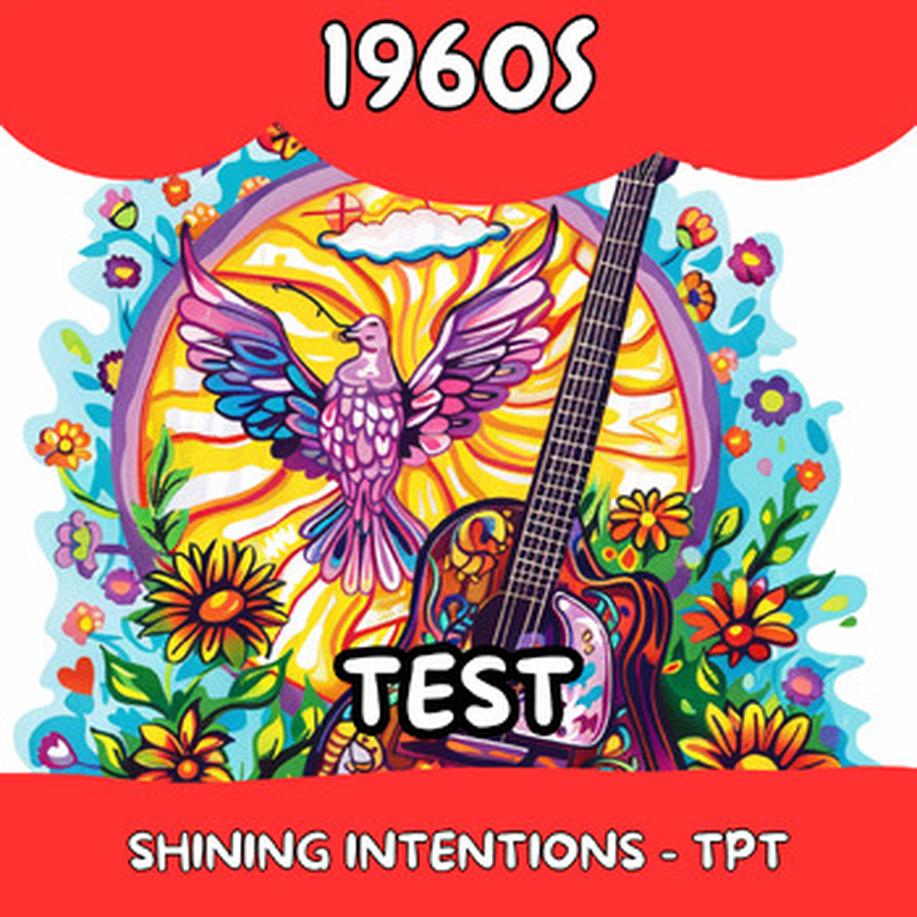
- The 1960s featured major political and social upheavals including the Vietnam War, civil rights struggles, and multiple high-profile assassinations.
- Cultural shifts overturned traditional norms, fostering individualism and new forms of expression.
- Television news expanded dramatically, broadcasting live coverage of violent events for the first time.
- The decade sharply contrasted with the conservative 1950s, marking a generational and cultural turning point.
- Violent clashes between police and protesters highlighted ongoing social tensions and government responses.
How Crazy Was the 60’s in America?
If you ask how crazy the 60’s were in America, the short answer is: incredibly, explosively, unforgettable. The decade was a whirlwind of social upheaval, political chaos, cultural revolution, and rapid media evolution — a perfect storm that forever changed the nation.
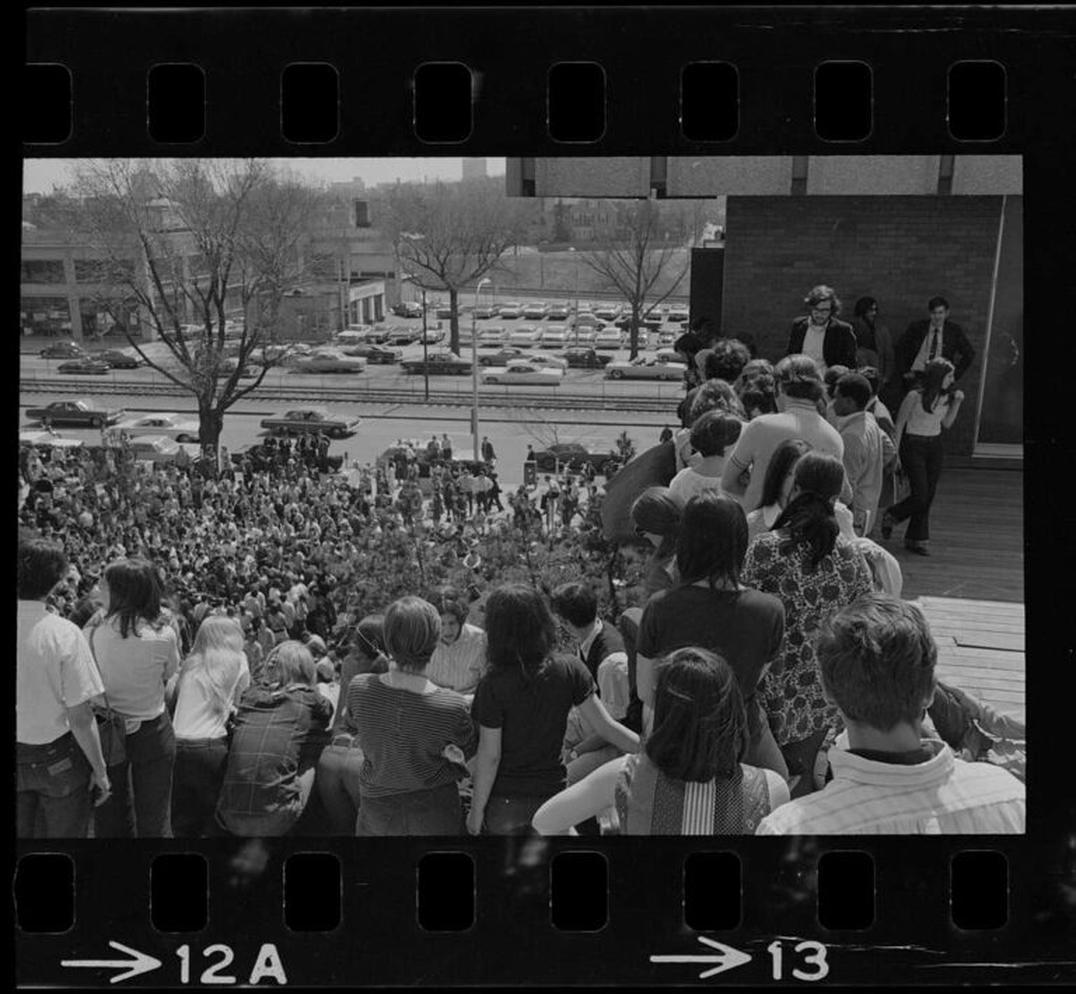
But let’s dig into what made the 1960s so wildly intense, from the landmark events to the social shifts that exploded like fireworks across every corner of American life.
The Social and Political Earthquake
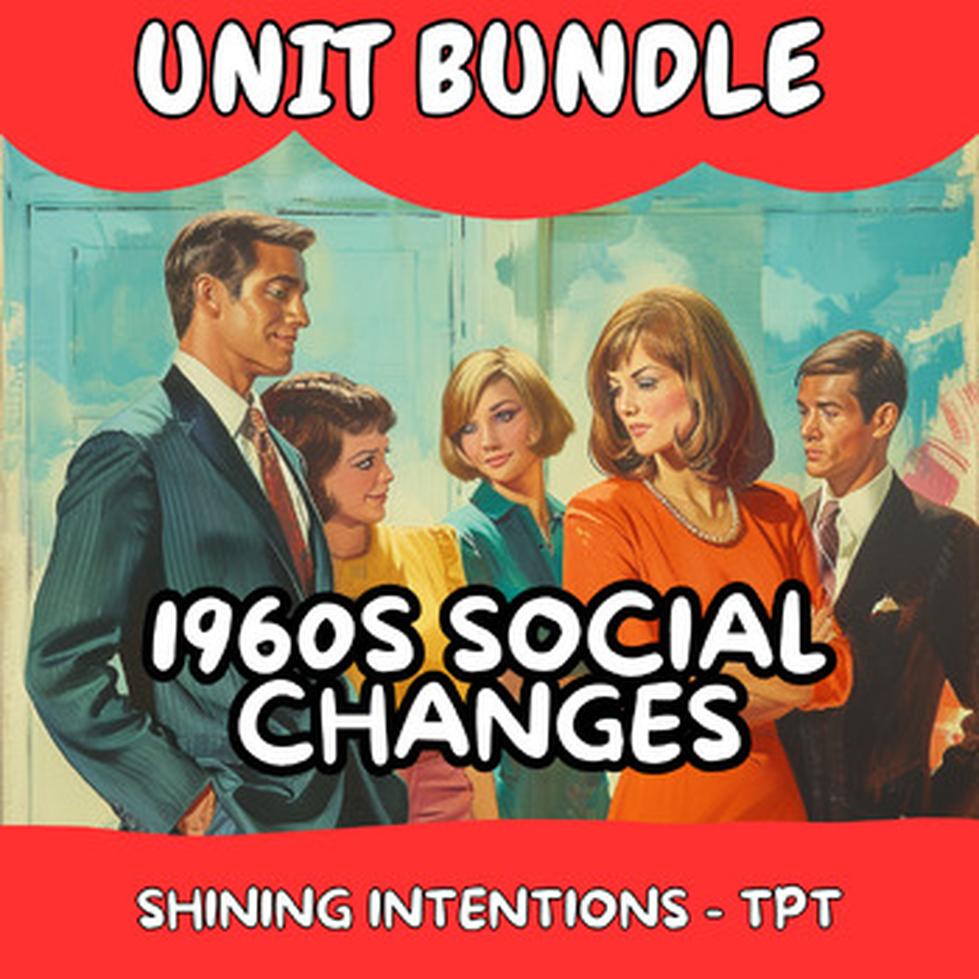
The 60s were packed with seismic moments that shook the foundations of society. The Vietnam War dragged on, polarizing the nation with protests and fierce debate. The Cold War kept everyone guessing about nuclear threats while fueling the space race that ultimately put a man on the moon.
Meanwhile, America didn’t just watch history happen; it lived through tragedy and transformation. Assassinations of powerful figures like two Kennedys, Martin Luther King Jr., and Malcolm X struck deeply at the heart of the nation, symbolizing the volatile tension brewing beneath the surface.
Simultaneously, civil rights movements roared louder than ever before, forcing society to confront racial inequality head-on. Groups like The Black Panthers advocated for change with fiery passion, while the Stonewall riots signaled the dawn of LGBTQ+ activism. Feminism gathered momentum through abortion rights marches and challenged traditional gender roles.
Culture was just as revolutionary. Long hair and short skirts flouted conservative style norms. Rock and roll blasted speakers, bringing black music into white households. White Americans tasted Thai food and embraced previously “foreign” influences.
Honestly, without these battles and breakthroughs, today’s society would look drastically different. Imagine a world where college campuses held mostly men or mainstream media simply echoed government talking points. That reality seemed almost real before the 60s flipped the script.
Watch It Live: The Dawn of Mass Media Madness
The 60s introduced America to the 24-hour news cycle, arguably the decade’s sneaky catalyst for the intensity. At the start of the decade, nightly news ran about 30 minutes. By the end, TV viewers watched up to 4 hours of news daily. Networks craved material, so protests, assassinations, and political drama became televised spectacles.
For the first time, Americans saw live footage of assassinations—not just headlines. This unprecedented exposure fueled public engagement and anxiety. Nobody wanted to change the channel during these tense moments, cementing the media’s role as a social amplifier.
This era also made police brutality visible in real time. Past decades witnessed violent police actions, but the cold glare of TV cameras added new layers of public scrutiny and emotional impact. Watching authorities shoot at protestors in Detroit during the 1967 rebellion, where over 40 people were shot, made abstract issues painfully immediate for children and adults alike.
Comparing the 60s: The Decade That Changed the Tune
Was the 60s the most transformational decade? Well, it certainly stands out. Yet, the 40s introduced mass industrial and military shifts during World War II. The 50s imposed a strictly conformist culture that set the stage for the explosion of individualism a decade later. And the 70s carried forward these changes into new territories.
The key to appreciating the 60s is realizing its incredible contrast to the previous decade. The rigid, often repressive 1950s were like a tightly coiled spring, ready to burst. The 60s delivered that burst in vibrant, dramatic ways. It changed how Americans thought, dressed, loved, and protested.
The Baby Boomers’ Playground
The Baby Boomer generation—children born post-World War II—turned the 60s into their coming-of-age stage. This demographic surge meant a massive youth population hungry for change, expression, and breaking free. Their memories of the decade linger powerfully in American public consciousness.
Think of the 60s as a coming-of-age story for America itself, with Baby Boomers as the protagonists pushing against inherited norms. From Woodstock festivals to draft dodging, this generation stamped their mark on history.
Civil Unrest and the Facing of Force
Civil unrest in the 60s wasn’t just loud—it was dangerous. Protesters and rioters frequently faced violent police crackdowns. The 1967 Detroit rebellion is a famous example, where police shot over 40 people during a week of chaos. Such brutality was broadcast on TV, gripping the nation but also sparking fear and anger.
This era forced a reckoning: How do we balance protest rights with law and order? It exposed uncomfortable truths about systemic inequality, law enforcement behavior, and the limits of democracy in crisis.
In Conclusion: A Decade Unbound
The 1960s in America weren’t just “crazy” — they were a defining whirlwind of conflict, creativity, and transformation. It’s hard to imagine just how drastically this decade changed social attitudes, civil rights, media, and cultural norms in such a compressed time.
It’s a vivid reminder that societal change doesn’t happen quietly. It’s noisy, messy, and fueled by folks brave enough to challenge the status quo. So the next time you wonder how crazy the 60s were in America, remember: it was a decade that redefined freedom, justice, and identity for generations to come.
